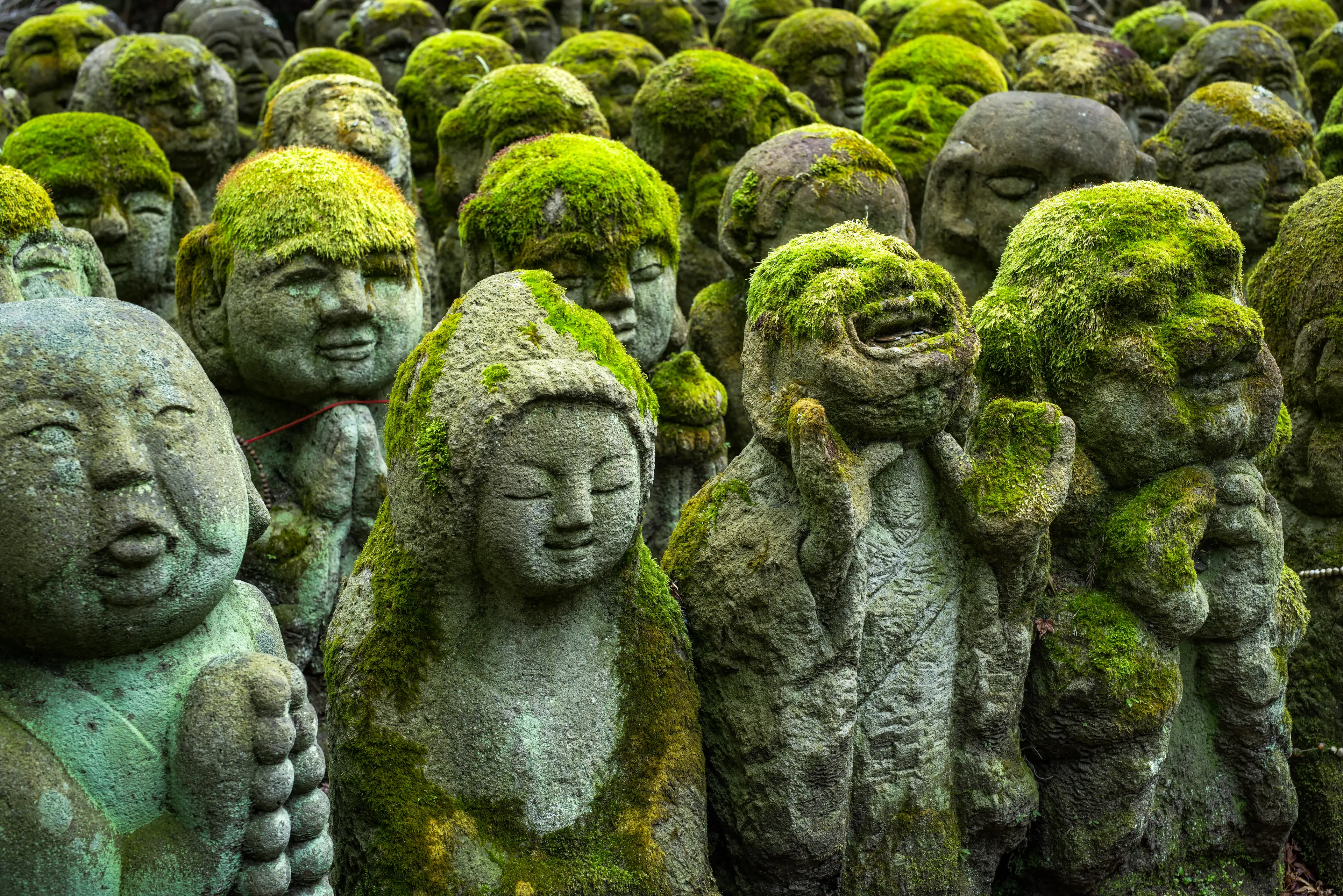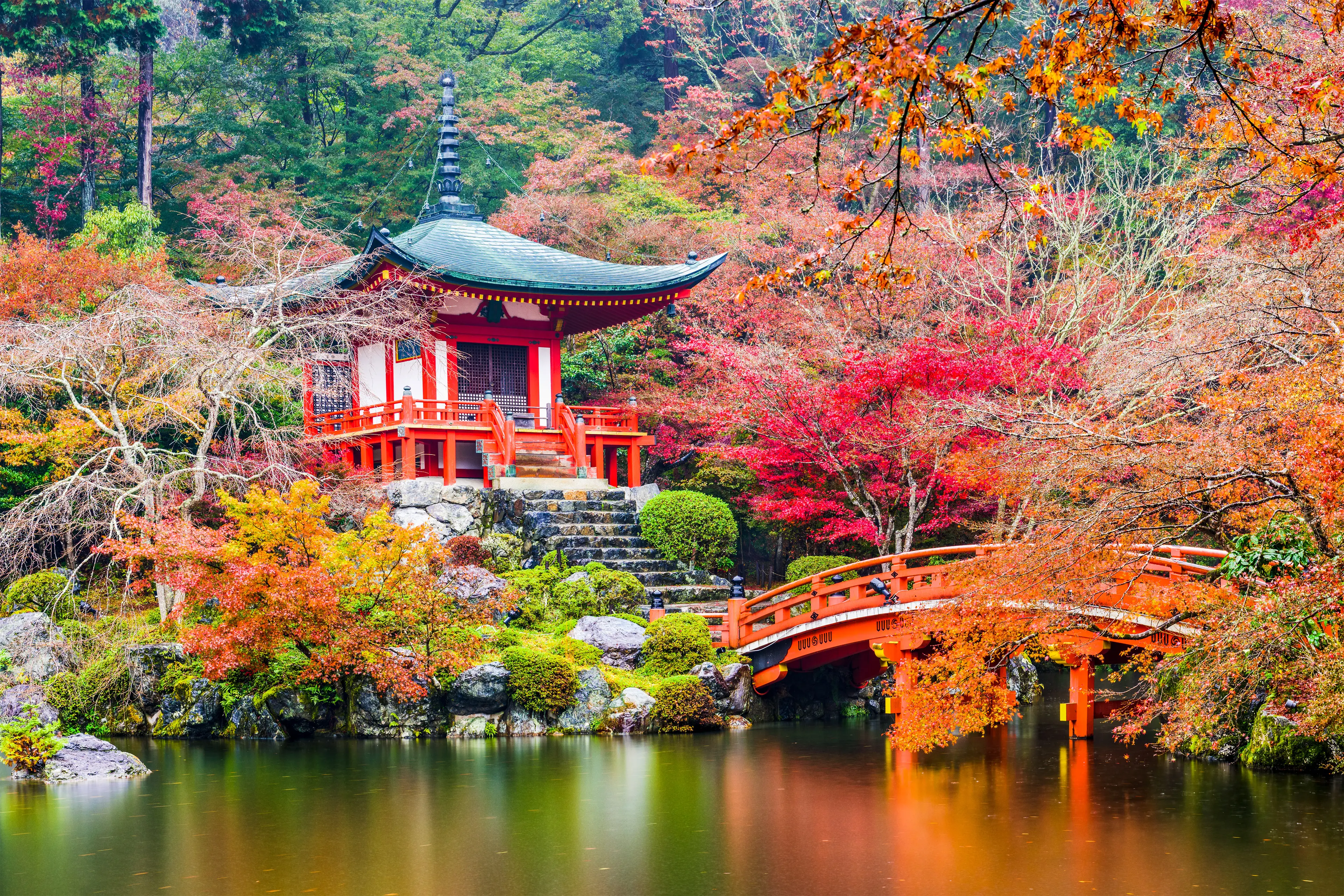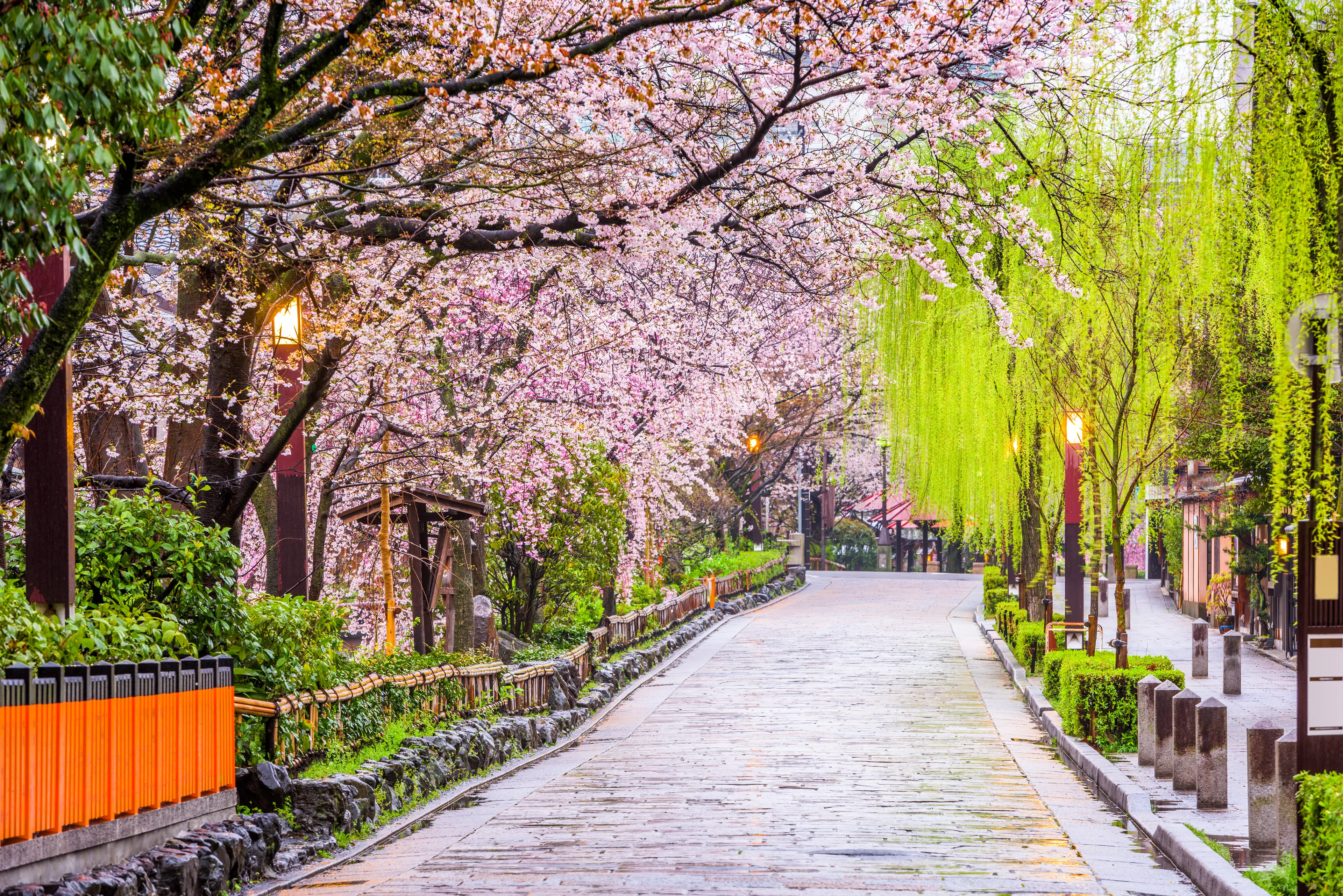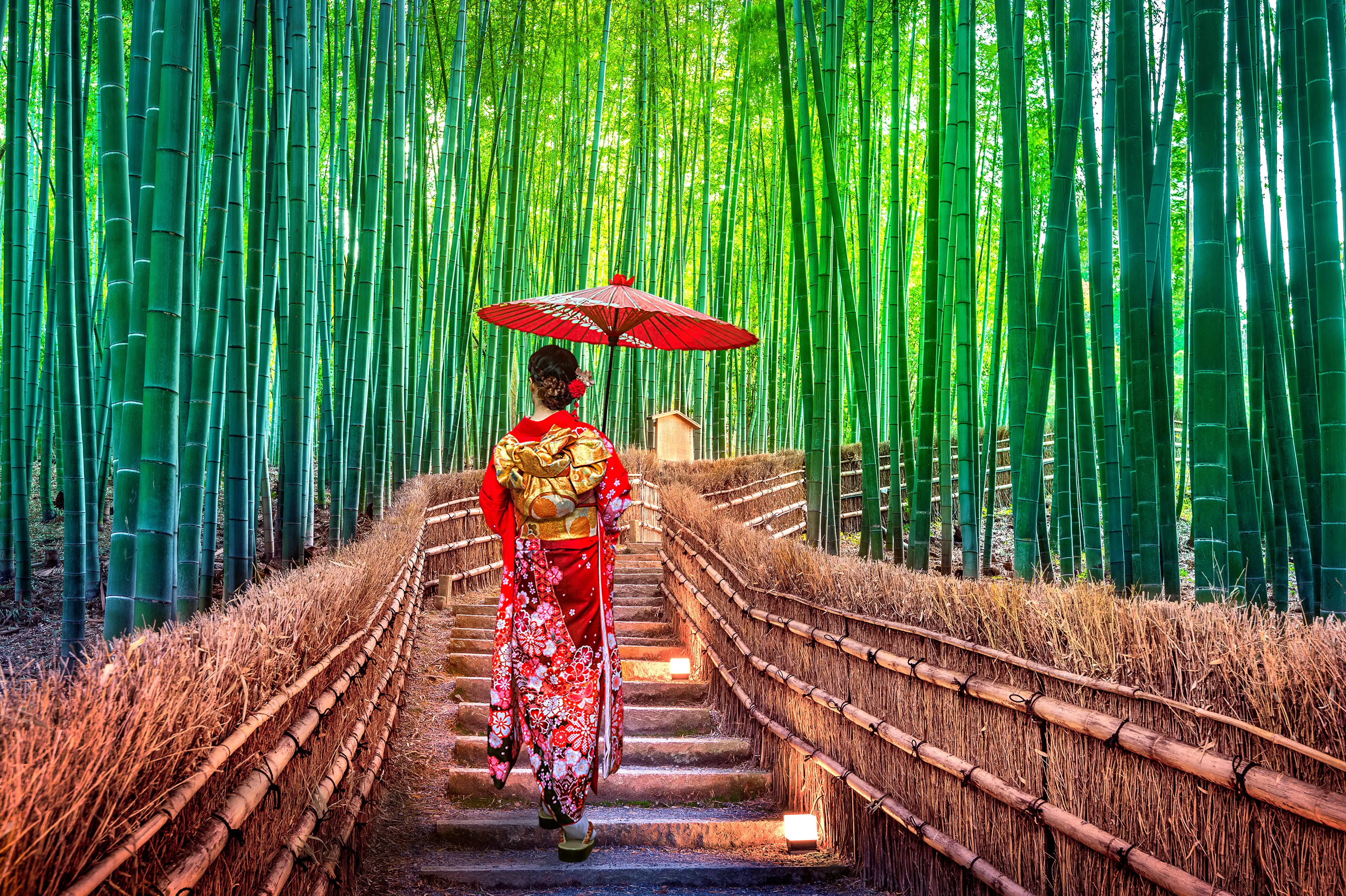1-Day Kyoto Itinerary: Outdoor Fun & Culinary Delights for Couples
Kyoto, Japan
1 days
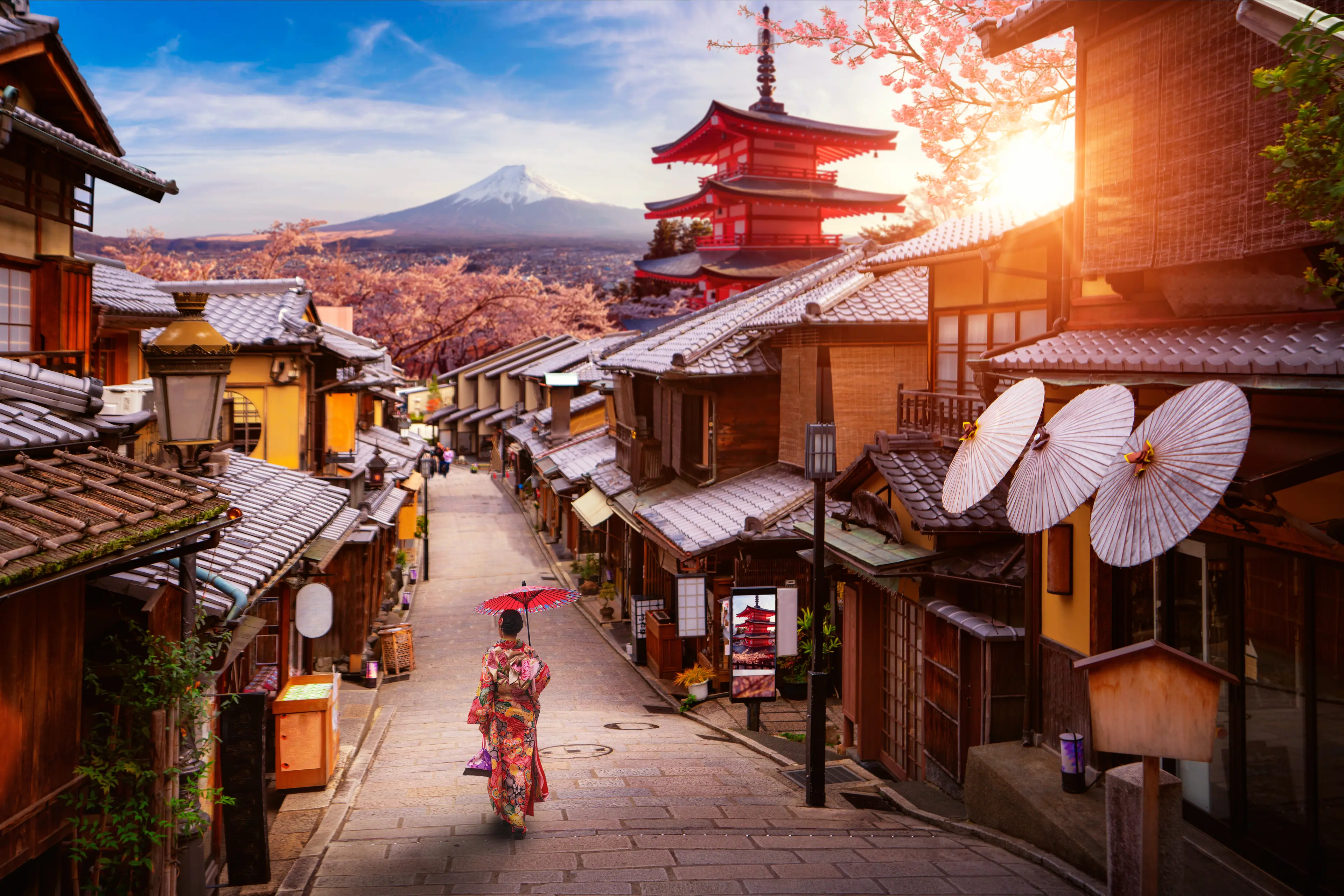
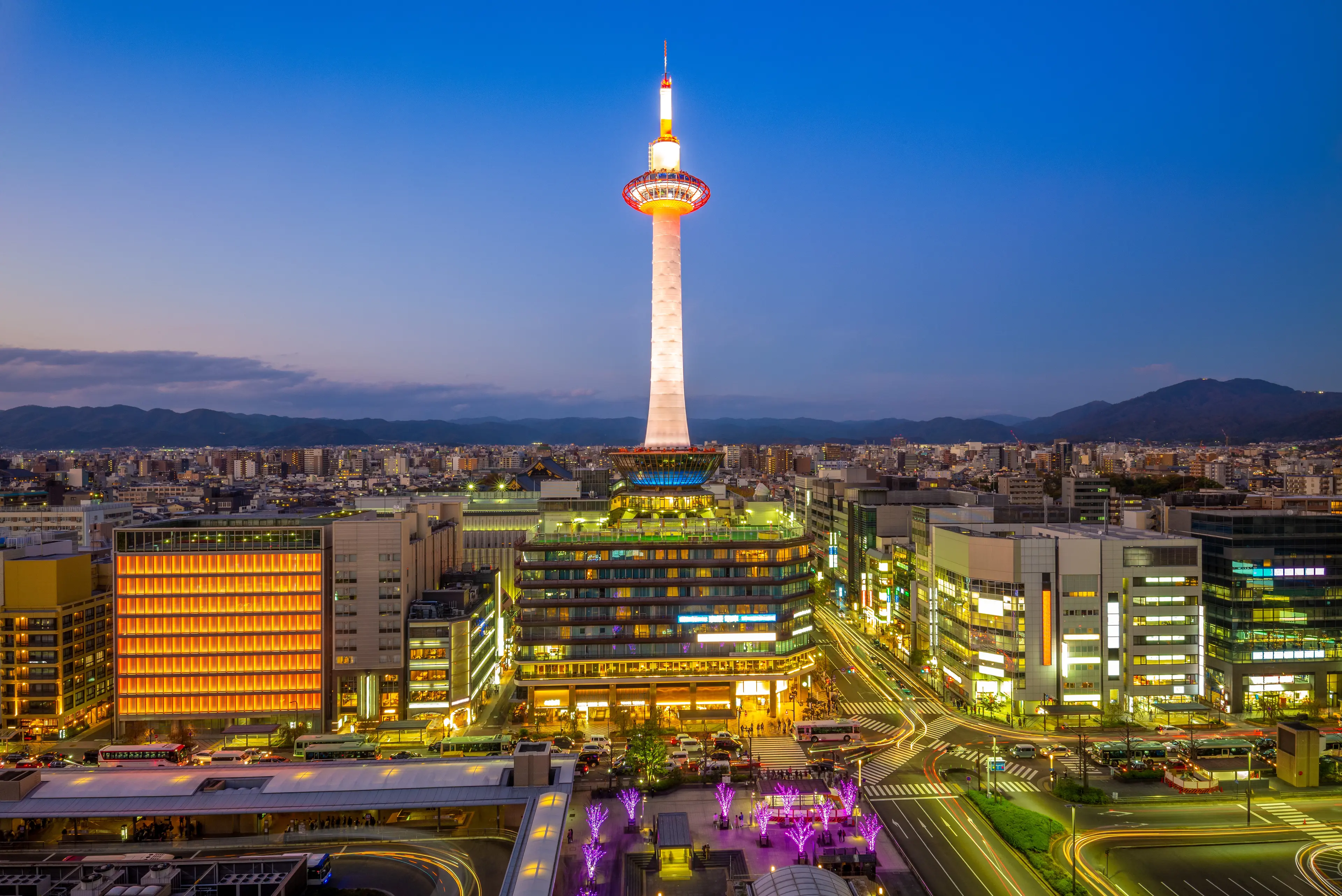
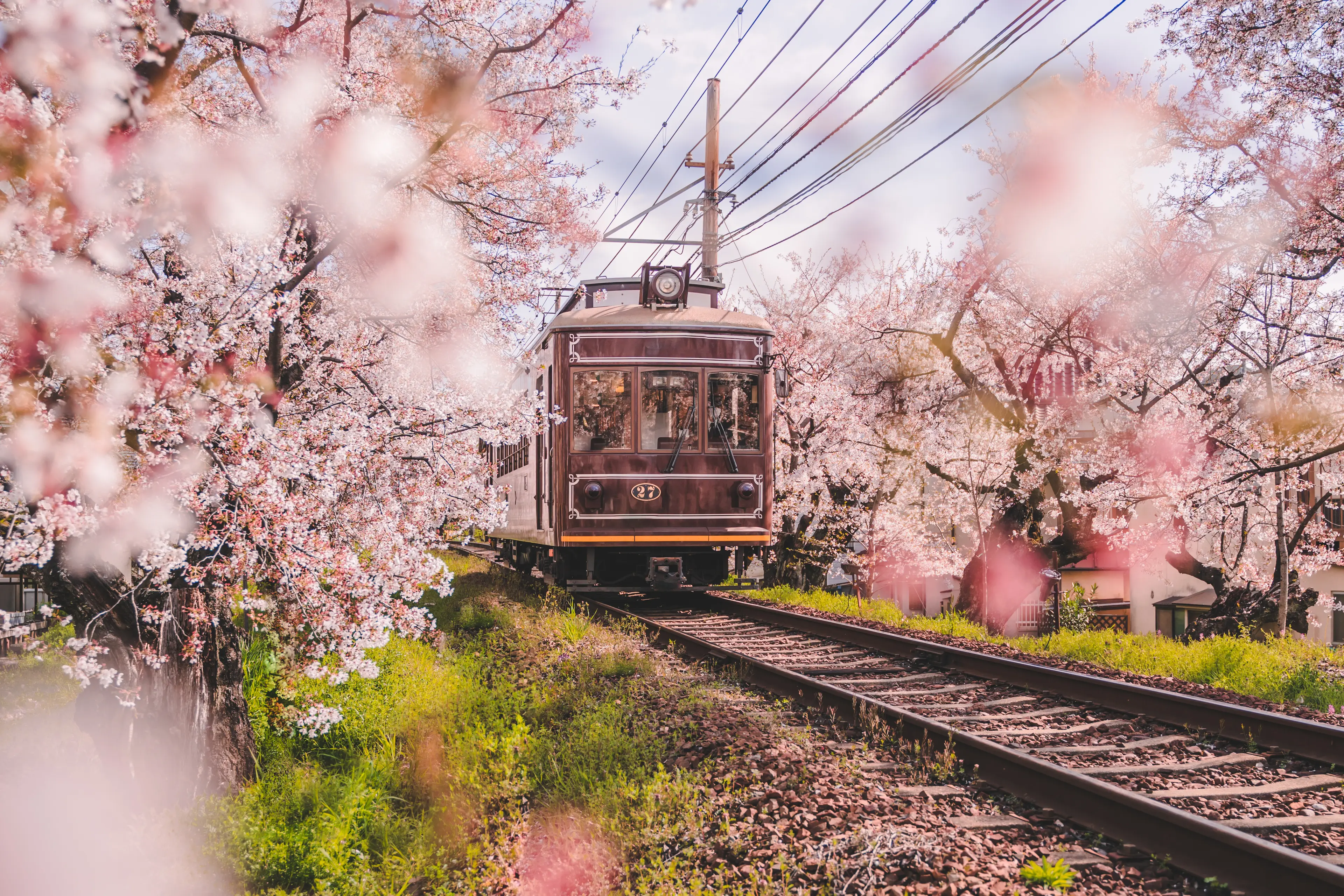
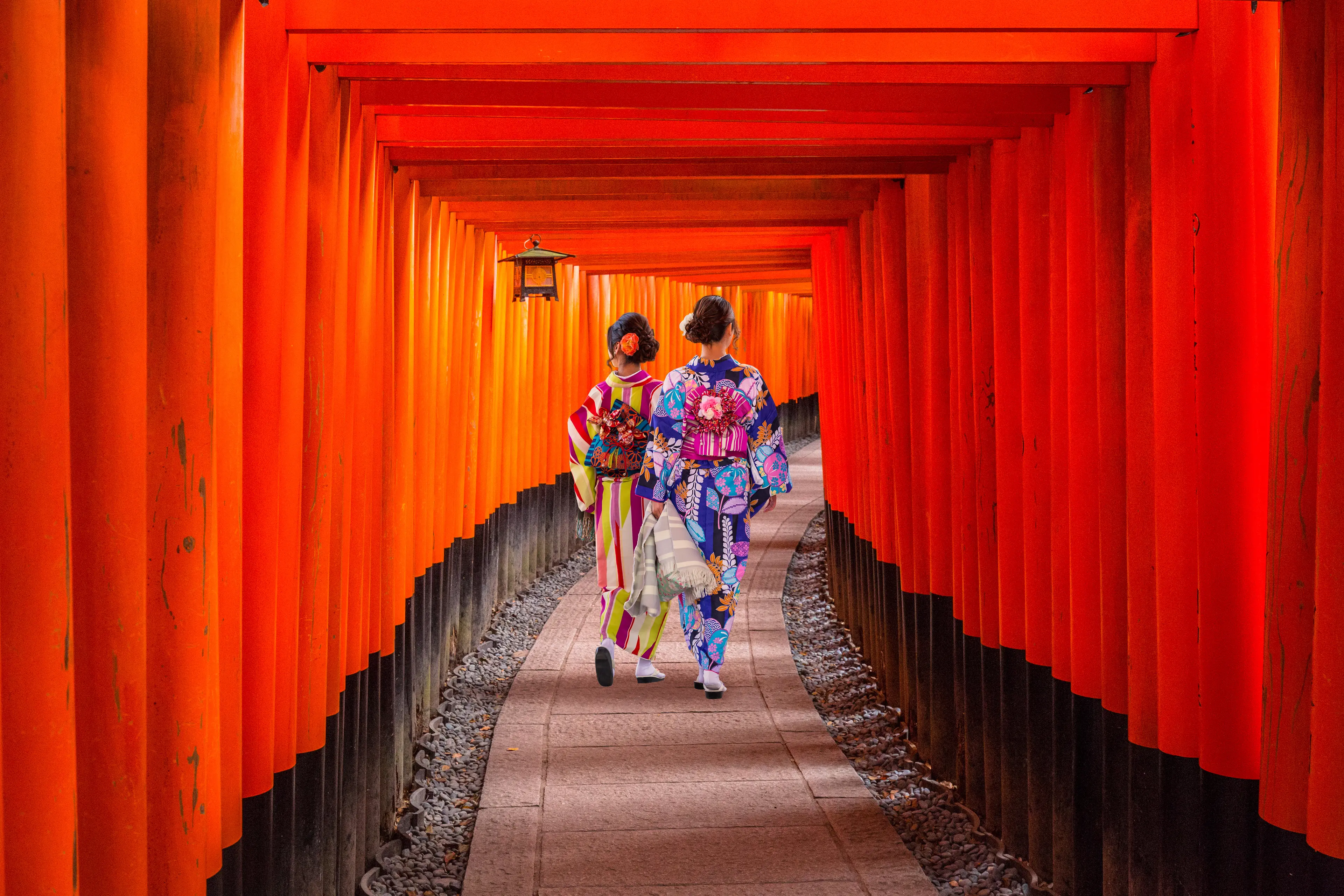
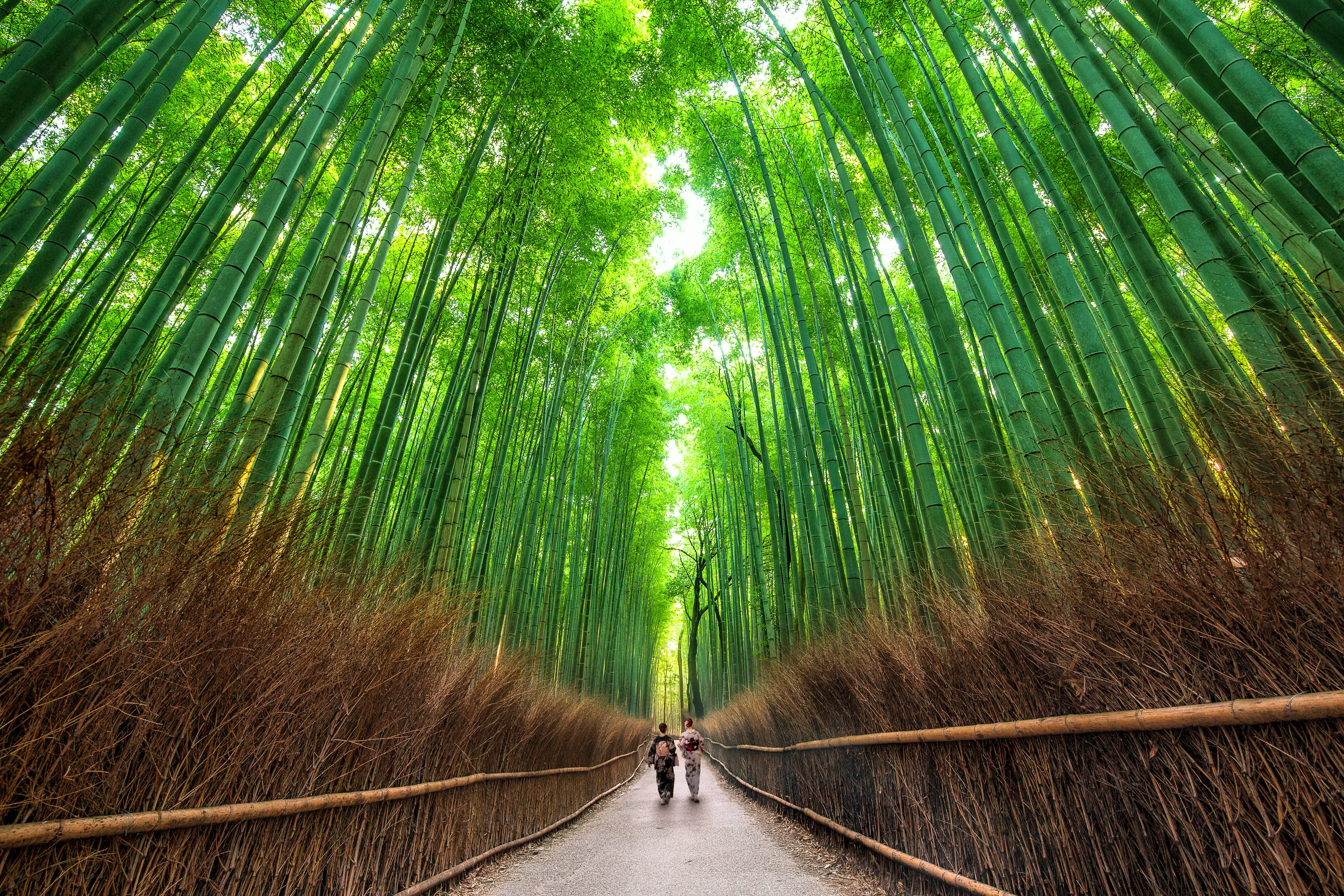
About Kyoto, Japan
Discover the timeless charm of Kyoto, Japan's ancient capital. Immerse yourself in its rich history by visiting UNESCO World Heritage sites like Kinkaku-ji, the Golden Pavilion, and Kiyomizu-dera, a temple offering panoramic city views. Wander through the iconic Fushimi Inari Shrine with its thousand red torii gates. Experience the traditional tea ceremony in Gion, the city's geisha district, or stroll along the Philosopher's Path during cherry blossom season. Savor authentic Japanese cuisine, from kaiseki dining to street food in Nishiki Market. Kyoto seamlessly blends the old and the new, offering a unique cultural experience that leaves every visitor enchanted.
1-Day Itinerary
Attractions in Itinerary (4)

1Fushimi Inari Shrine
An important Shinto shrine in southern Kyoto known for its thousands of vermilion torii gates.

2Arashiyama Bamboo Grove
One of the most photographed sights in the city, offering a unique experience of walking through a massive bamboo grove.

3Tenryu-ji Temple
Tenryu-ji Temple is a UNESCO World Heritage Site and one of the most important Zen temples in Kyoto. It features beautiful gardens and a stunning dragon ceiling painting.

4Kamo River
The Kamo River is a popular spot for locals and tourists alike for walking, jogging, and picnicking. The riverbanks are lined with cherry trees, making it a popular spot during cherry blossom season.
Local Food and Drinks (12)

Kaiseki
A traditional multi-course Japanese dinner that is considered the epitome of Japanese cuisine in Kyoto. It features seasonal and local ingredients.

Matcha
A type of powdered green tea that is a specialty of Kyoto. It is often served in traditional tea ceremonies.
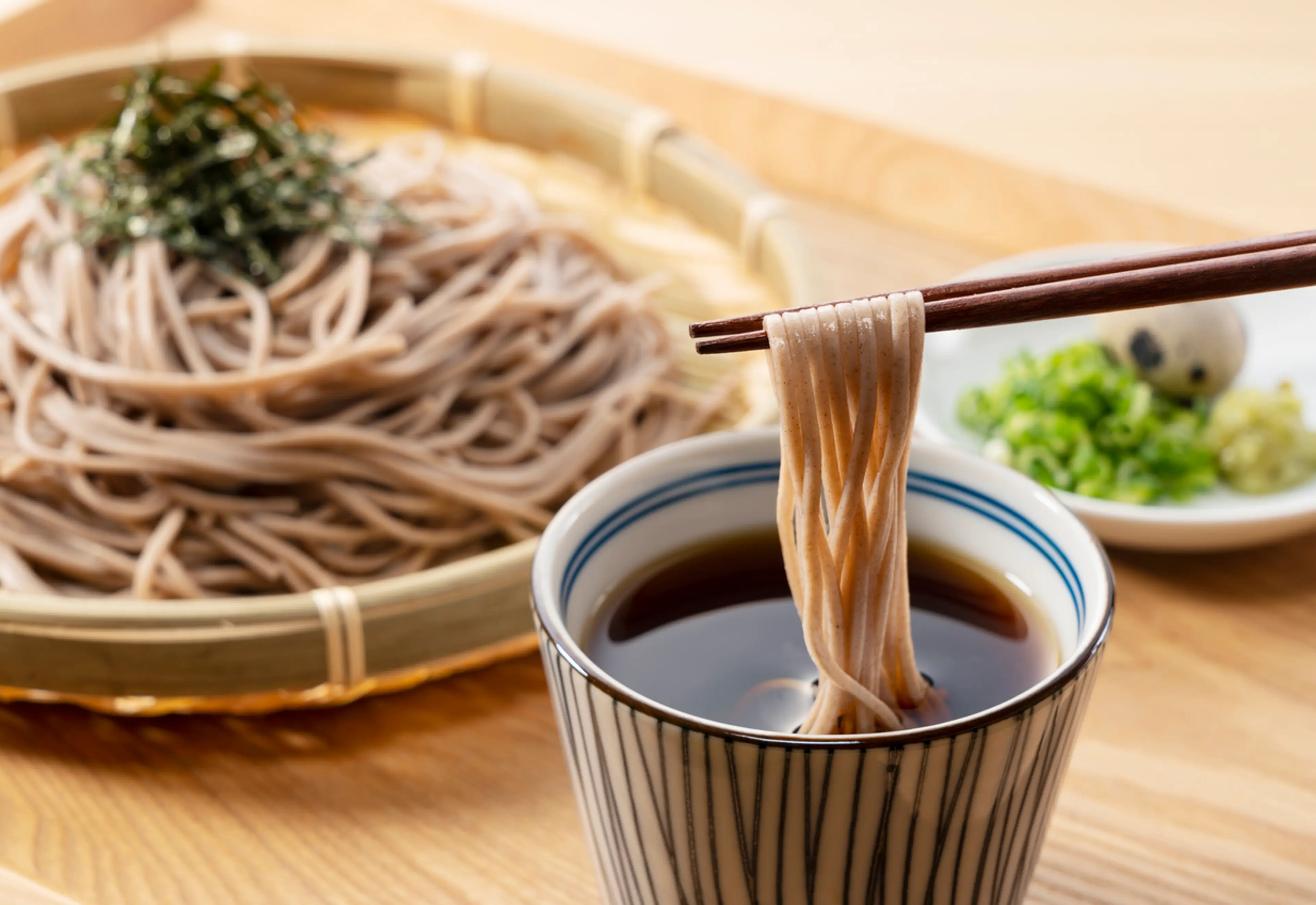
Soba
Buckwheat noodles that are a popular dish in Kyoto. They can be served cold with a dipping sauce or hot in a soup.
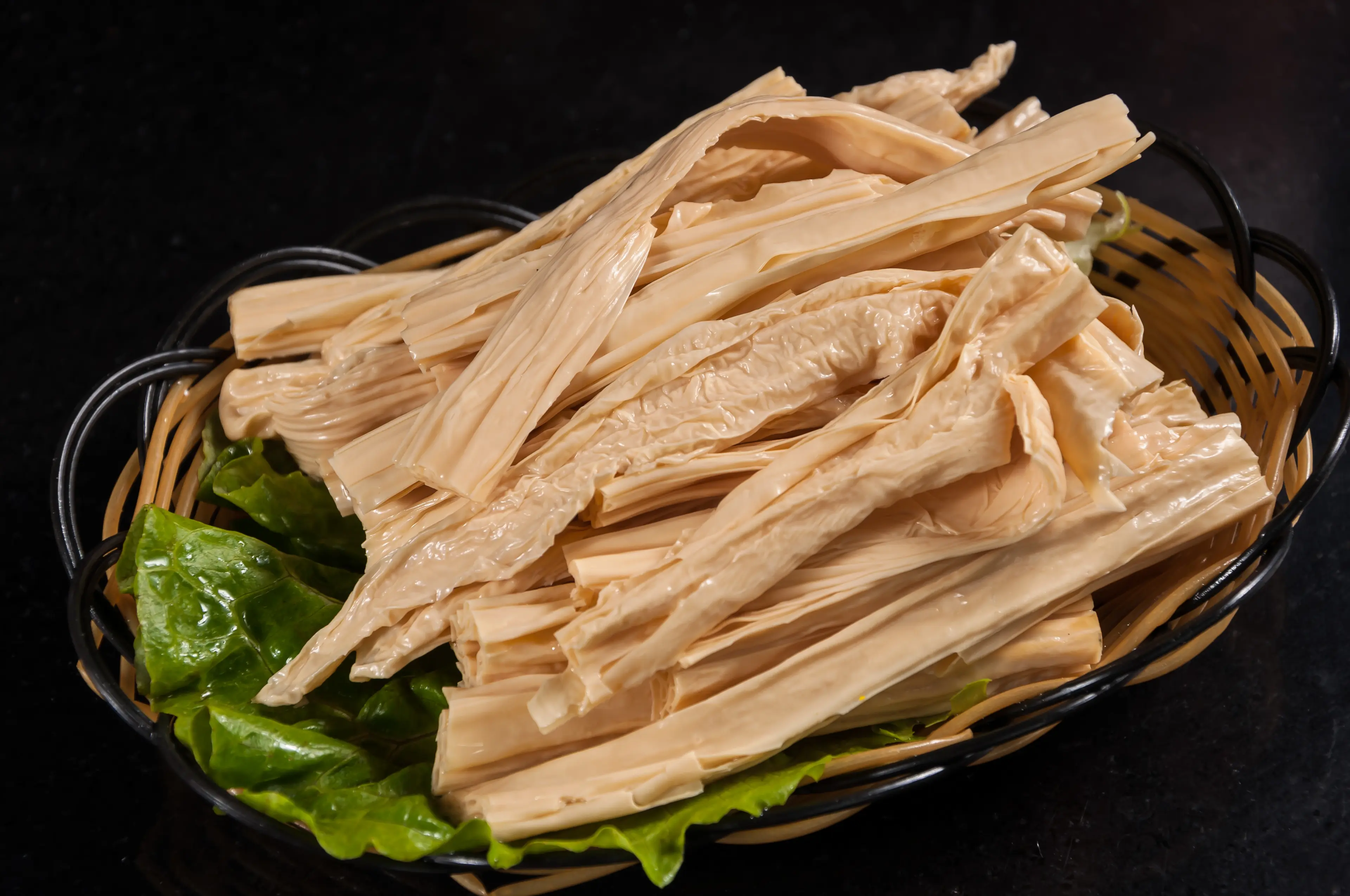
Yuba
A delicacy in Kyoto, yuba is the skin that forms on the surface when soy milk is boiled. It can be eaten raw, cooked, or used in various dishes.

Yudofu
A hot tofu dish that is a winter specialty in Kyoto. It is typically served with a soy-based sauce and vegetables.

Sake
A traditional Japanese rice wine that is often served warm. Kyoto is known for its high-quality sake due to the purity of its water sources.

Tempura
A dish consisting of seafood or vegetables that have been battered and deep-fried. It is a popular dish in Kyoto.

Tsukemono
Japanese pickles that are a staple in Kyoto cuisine. They are often served as a side dish or used as a garnish.

Udon
Thick wheat noodles that are a popular dish in Kyoto. They can be served in a variety of ways, including in a hot soup or with a dipping sauce.

Unagi
Grilled eel that is a delicacy in Kyoto. It is often served over rice in a dish called unadon.
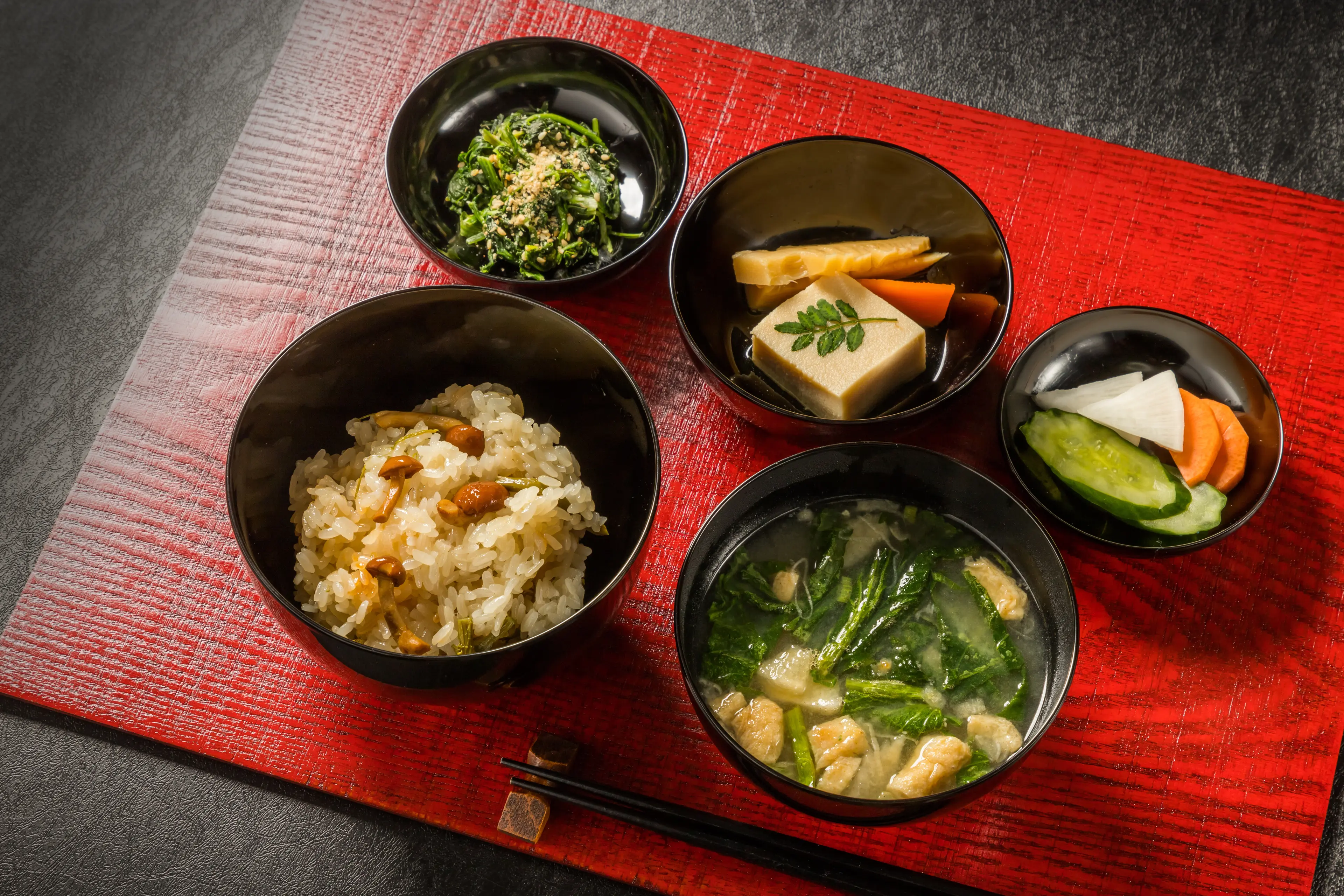
Shojin Ryori
A type of vegetarian cuisine that was developed by Buddhist monks in Kyoto. It is made without meat, fish, or other animal products.
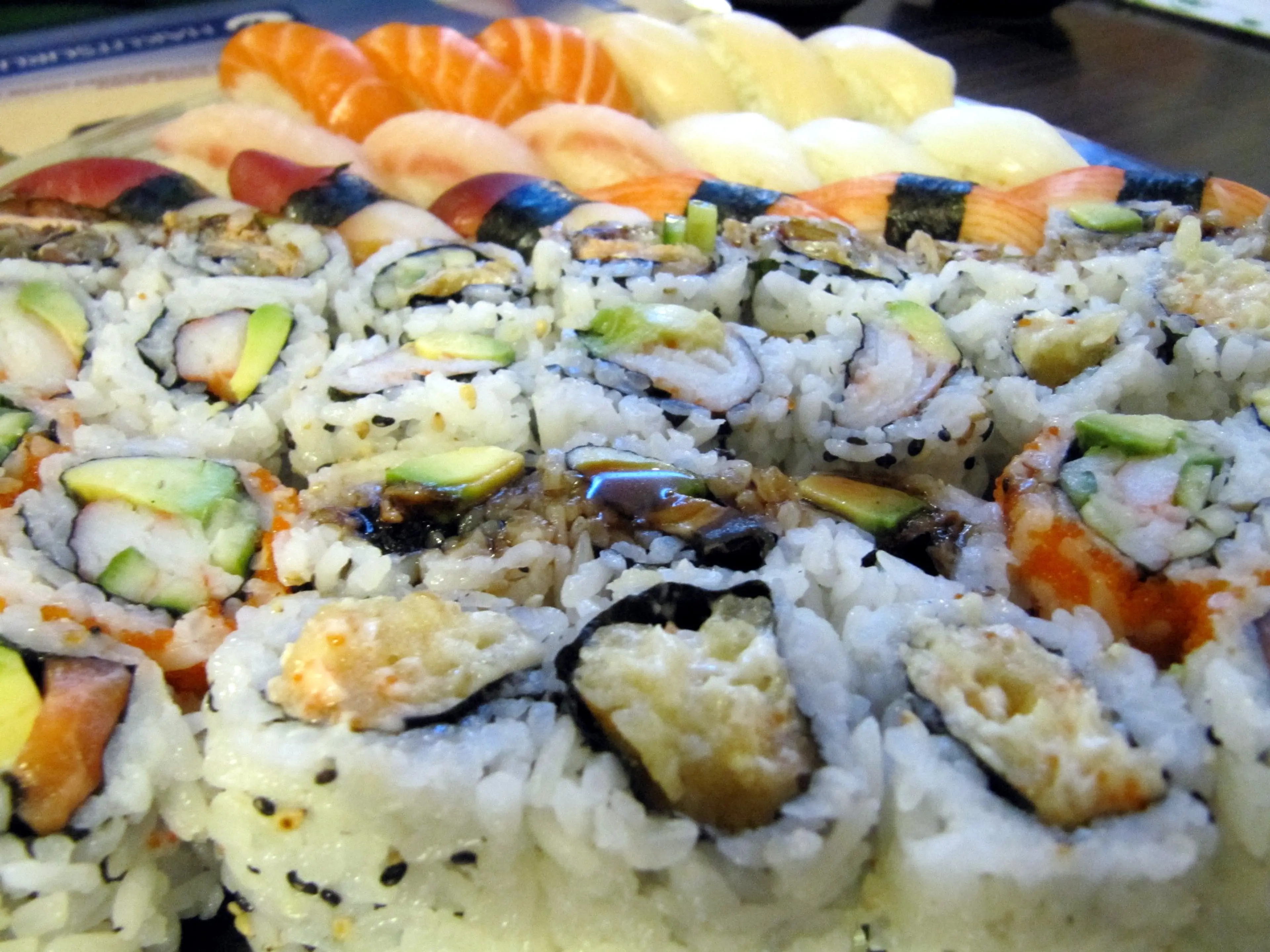
Kyoto-style Sushi
A type of sushi that is a specialty of Kyoto. It often features cured or cooked ingredients, in contrast to the raw fish commonly used in other types of sushi.
Best time to visit
The best time to visit Kyoto, Japan, is during the spring (March to May) and autumn (October to November). These seasons offer mild weather and are also the times when the cherry blossoms and autumn leaves are in full bloom, providing breathtaking scenery. However, these periods are also the peak tourist seasons, so expect larger crowds and higher prices. If you prefer a quieter experience, consider visiting in the winter months. Despite the cold, the snow-covered temples and gardens offer a unique and serene beauty.
How to get around
Kyoto City Bus
Kyoto City Bus is a convenient and popular means of transportation for both locals and tourists. It covers the city extensively including many of Kyoto's top attractions. English announcements and signs are available.
Kyoto Subway
Kyoto has two subway lines: the Karasuma Line and the Tozai Line. They are not as extensive as the bus network, but they are a good option for certain routes, especially during rush hour when the roads can be congested.
JR Trains
Japan Railways (JR) operates a few local lines that are useful for tourists, especially the Sagano Line and the Nara Line. The JR lines are covered by the Japan Rail Pass.
Private Railways
In addition to JR, there are a few private railway lines which can be useful for tourists, including the Keihan Line, the Hankyu Line, and the Kintetsu Line. These lines connect Kyoto with nearby cities like Osaka and Nara.
Rental Bicycle
Renting a bicycle is a great way to explore Kyoto, especially the Higashiyama District and Arashiyama where attractions are located close together. There are many rental shops around the city, especially near major train stations.
Taxis
Taxis are a convenient but more expensive way to get around Kyoto. They can be found at taxi stands at train stations or hailed on the streets. Most taxi drivers do not speak English, but they usually have a GPS system. It's a good idea to have your destination written in Japanese.
Ridesharing
Ridesharing services like Uber are available in Kyoto, but they are not as common or as cheap as they are in some other countries. They can be a good option if you're traveling with a group or have a lot of luggage.
Walking
Many of Kyoto's attractions are located close together, especially in areas like Higashiyama and Arashiyama, making walking a viable option. The city is also very pedestrian-friendly with lots of signs in English.
Rental Car
Renting a car can be a good option if you plan to explore the outskirts of Kyoto or other parts of the Kansai region. However, driving in Kyoto city can be challenging due to the narrow streets and heavy traffic. Plus, parking can be expensive and hard to find.
Important information
Currency¥ JPY
Time zoneUTC+9
Driving sideLeft
Emergency phoneAmbulance: 119; Fire: 119; Police: 110
Drinking waterYes
Power sockets
Voltage100 V
Things to know about Kyoto, Japan as a first time visitor
1
Kyoto is a city that respects its traditions. As a visitor, you should also respect these traditions and customs.
2
Japanese people are very polite and respectful. It is customary to bow when greeting someone.
3
The official language is Japanese. While some people may speak English, it is not widely spoken. It may be helpful to learn a few basic Japanese phrases.
4
The currency in Japan is the Japanese Yen (JPY). Credit cards are widely accepted, but it's always a good idea to carry some cash, especially in smaller establishments.
5
Tipping is not customary in Japan. In fact, it can sometimes be seen as rude or confusing.
6
The city is very safe, but like any other place, it's always important to be aware of your surroundings and keep an eye on your belongings.
7
Public transportation in Kyoto is excellent. The city has an extensive bus and subway system, and taxis are also readily available.
8
Kyoto is a pedestrian-friendly city with many areas best explored on foot. Be sure to wear comfortable shoes.
9
The city is known for its beautiful gardens and temples. Dress modestly when visiting these sites.
10
Kyoto can be quite crowded, especially during peak tourist seasons. Be prepared for crowds at popular sites and on public transportation.
11
The climate in Kyoto is temperate, with four distinct seasons. Summers can be hot and humid, with temperatures reaching up to 90°F (32°C), while winters can be cold, with temperatures dropping to around 32°F (0°C).
12
It's important to stay hydrated, especially during the hot summer months. Vending machines selling drinks are widely available throughout the city.
13
Japanese food is a highlight of any visit to Kyoto. Be adventurous and try local specialties like kaiseki (traditional multi-course meal) and yudofu (tofu hot pot).
14
Smoking is not allowed on the streets in most areas in Kyoto. Look for designated smoking areas.
15
Public restrooms are generally clean and well-maintained in Kyoto. Western-style toilets are common, but you may also encounter traditional Japanese squat toilets.
16
If you're planning to visit multiple attractions, consider getting a one-day or two-day bus pass. It can save you money on transportation costs.
17
Shopping in Kyoto can be a unique experience. From traditional crafts to modern fashion, there's something for everyone.
18
It's considered rude to talk loudly or use your cell phone on public transportation. Keep your voice down and avoid phone calls.
19
Always stand on the left side on escalators, the right side is for people in a hurry.
20
Remember to remove your shoes when entering a traditional Japanese home or certain traditional restaurants and temples.
Basic Japanese to know as a first time visitor
English phrase | Native phrase | Pronunciation | When to use it |
|---|---|---|---|
Hello | こんにちは | Konnichiwa | Greeting someone |
Goodbye | さようなら | Sayōnara | Leaving or saying goodbye |
Thank you | ありがとう | Arigatou | Expressing gratitude |
Please | お願いします | Onegaishimasu | Making a request |
Yes | はい | Hai | Affirming |
No | いいえ | Iie | Negating |
Excuse me | すみません | Sumimasen | Getting attention or apologizing |
I'm sorry | ごめんなさい | Gomen nasai | Apologizing |
Do you speak English? | 英語を話せますか? | Eigo o hanasemasu ka? | Asking if someone speaks English |
I don't understand | わかりません | Wakarimasen | When you don't understand what was said |
Where is the bathroom? | トイレはどこですか? | Toire wa doko desu ka? | When you need to find a bathroom |
How much? | いくらですか? | Ikura desu ka? | Asking for the price |
I would like this | これをください | Kore o kudasai | When ordering or buying something |
Help | 助けて | Tasukete | When you need help |
Good morning | おはようございます | Ohayou gozaimasu | Greeting someone in the morning |
Good night | おやすみなさい | Oyasuminasai | Saying goodnight |
Delicious | おいしい | Oishii | Complimenting food |
Beautiful | きれい | Kirei | Complimenting a view or object |
I'm lost | 迷子になりました | Maigo ni narimashita | When you're lost |
Can you help me? | 助けてもらえますか? | Tasukete moraemasu ka? | When you need assistance |
Packing List
Clothing
Comfortable walking shoes
Lightweight clothing
Rain jacket or umbrella
Sunglasses
Hat for sun protection
Toiletries
Travel-sized toothpaste
Toothbrush
Travel-sized shampoo and conditioner
Deodorant
Razor
Travel-sized body wash or soap
Sunscreen
Hand sanitizer
Travel documents and essentials
Passport
Driver's license or ID card
Credit and debit cards
Cash (Japanese Yen)
Hotel reservation confirmation
Travel insurance documents
Emergency contact information
Electronics and gadgets
Smartphone
Charger for smartphone
Power bank
Camera
Charger for camera
Universal travel adapter
Headphones
Miscellaneous items
Reusable water bottle
Snacks
Travel guidebook for Kyoto
Map of Kyoto
Japanese phrasebook
Backpack or daypack
Travel pillow
Earplugs and eye mask
Weather Conditions
When visiting Kyoto, Japan, it's important to be aware of the city's distinct four seasons and prepare accordingly. Spring (March to May) is a popular time to visit Kyoto, with temperatures ranging from 50°F to 70°F (10°C to 21°C). This is also the cherry blossom season, so expect some crowds. Light layers and a rain jacket are recommended as there can be occasional showers. Summer (June to August) in Kyoto can be hot and humid, with temperatures often reaching up to 95°F (35°C). It's advisable to stay hydrated, wear light, breathable clothing, and use sunscreen. Also, be prepared for the rainy season (Tsuyu) in June and July. Autumn (September to November) is another beautiful season to visit Kyoto, with temperatures ranging from 60°F to 80°F (15°C to 27°C). The fall foliage is a sight to behold. Pack some light layers as it can get cooler, especially in the evenings. Winter (December to February) can be quite cold with temperatures dropping to around 32°F (0°C). Snowfall is rare but possible. Warm clothing, including a heavy coat, gloves, and a hat, are essential. Regardless of the season, it's always a good idea to check the local weather forecast before your trip to ensure you're packing appropriately. Also, remember that Kyoto is a city best explored on foot, so comfortable walking shoes are a must.
| Month | Hi / Lo (°C) | Weather Overview |
|---|---|---|
January | 10° / 1° | January is the coldest month in Kyoto, with occasional snowfall. It's a great time to visit if you enjoy serene, snowy landscapes. |
February | 11° / 1° | February is still quite cold, with less snow but more clear, sunny days. Ideal for those who enjoy cooler weather. |
March | 16° / 4° | March sees the start of spring, with temperatures gradually increasing. The cherry blossoms start to bloom towards the end of the month. |
April | 21° / 9° | April is one of the most popular months to visit Kyoto due to the full bloom of cherry blossoms. The weather is pleasantly warm during the day. |
May | 26° / 14° | May is comfortably warm, with plenty of sunshine and greenery. It's a great time to explore the city's parks and gardens. |
June | 29° / 18° | June marks the start of the rainy season in Kyoto. Despite the rain, the lush greenery and hydrangea blooms make it a beautiful time to visit. |
July | 34° / 23° | July is hot and humid, with the rainy season ending mid-month. It's a good time to visit indoor attractions like museums and temples. |
August | 35° / 24° | August is the hottest month in Kyoto. It's a great time to visit if you enjoy summer festivals and fireworks. |
September | 30° / 20° | September is still warm, but with less humidity. The start of autumn foliage makes it a beautiful time to visit. |
October | 24° / 14° | October offers comfortable temperatures and stunning autumn foliage. It's one of the best times to visit Kyoto. |
November | 18° / 8° | November is cool and crisp, with the autumn foliage at its peak. It's a great time to explore the city's gardens and temples. |
December | 12° / 3° | December is chilly, but clear and often sunny. It's a great time to visit if you enjoy Christmas lights and end-of-year festivities. |
Did you know?
Places near by Kyoto, Japan

Nara Park
Famous for its free-roaming deer and historical temples.

Osaka Castle
One of Japan's most famous landmarks with a five-story castle keep.

Kobe Harborland
A shopping and entertainment district along the waterfront of Kobe's port area.

Himeji Castle
A UNESCO World Heritage Site, also known as White Heron Castle due to its elegant, white appearance.

Biwako Valley
A popular destination for outdoor activities with beautiful views of Lake Biwa.

Mount Koya
The center of Shingon Buddhism, home to an active monastic center.

Okayama Korakuen Garden
One of the Three Great Gardens of Japan, known for its scenic beauty.

Hiroshima Peace Memorial Park
A memorial park in the center of Hiroshima, dedicated to the legacy of Hiroshima as the first city in the world to suffer a nuclear attack.

Miyajima
Famous for Itsukushima Shrine with its floating torii gate.

Kanazawa
Known for its well-preserved Edo-era districts, art museums and regional handicrafts.
